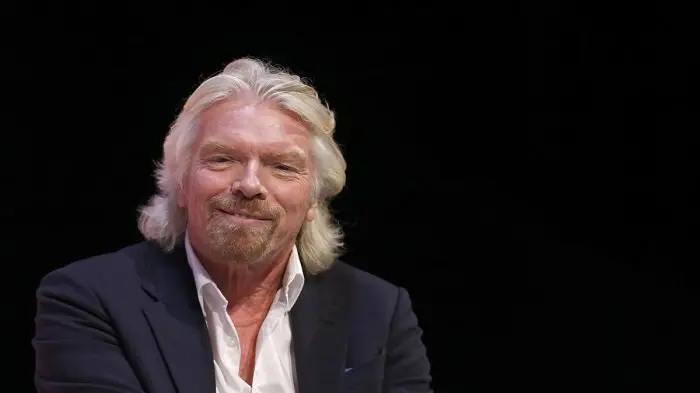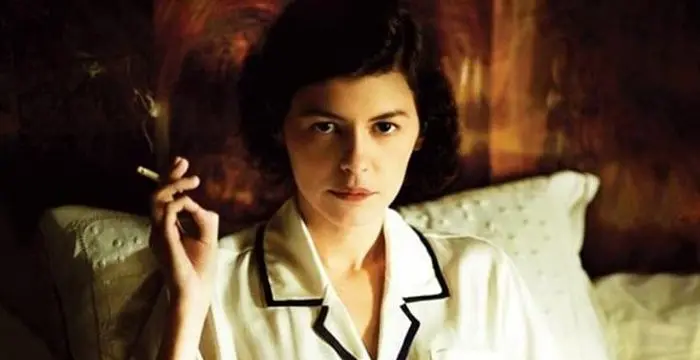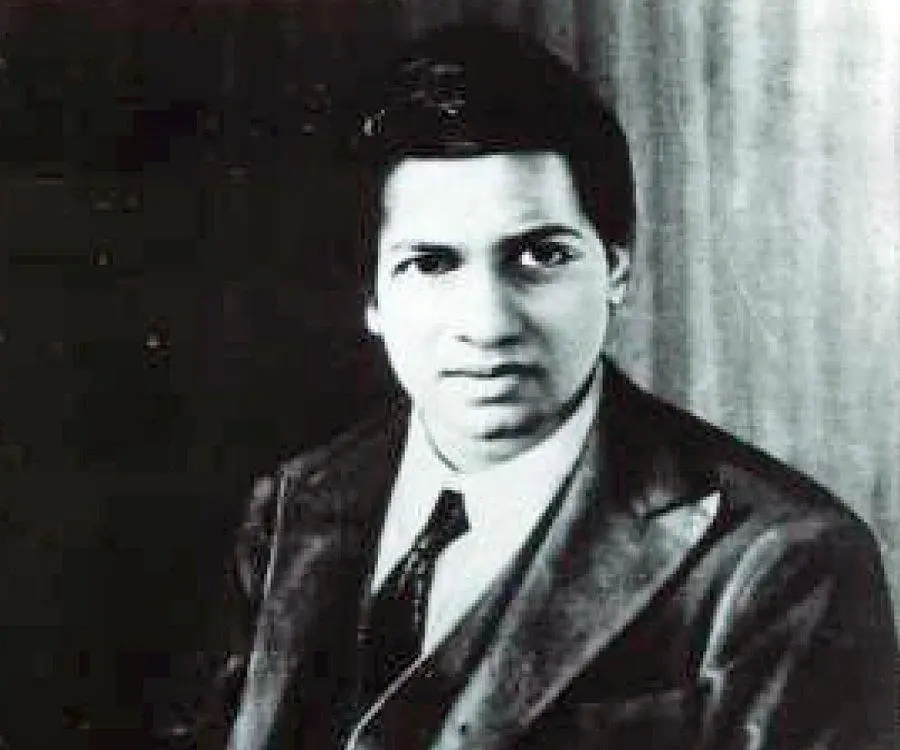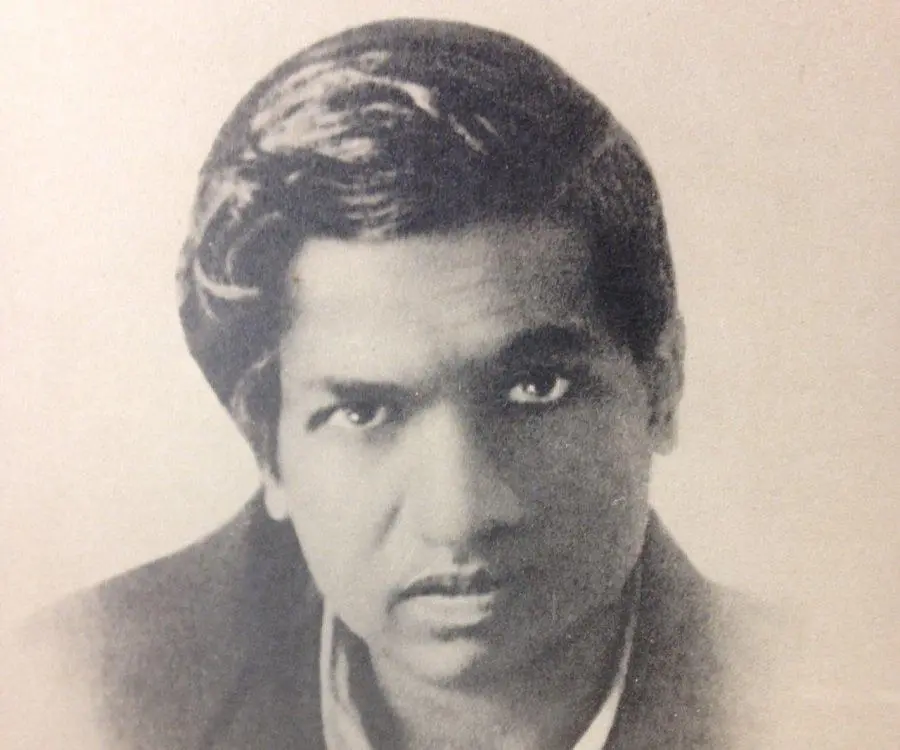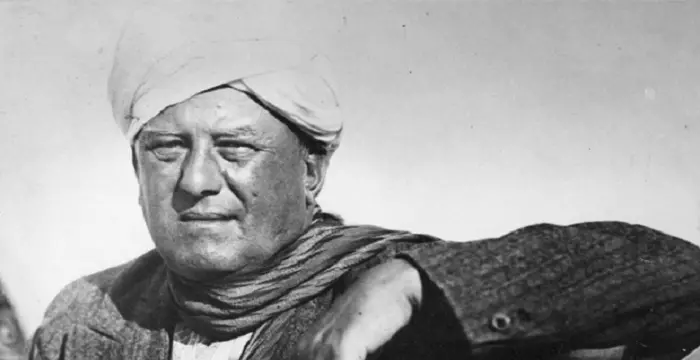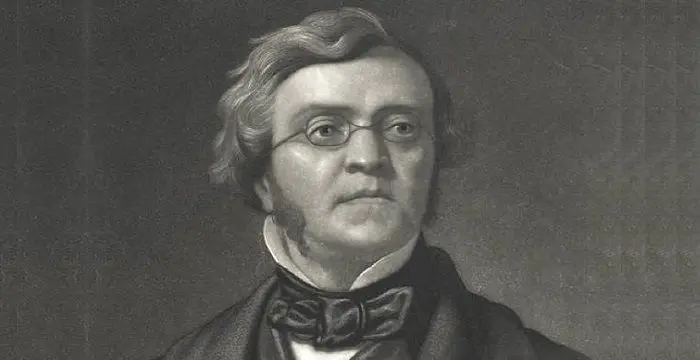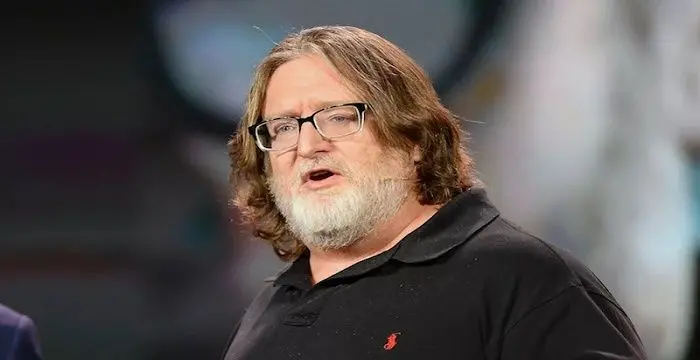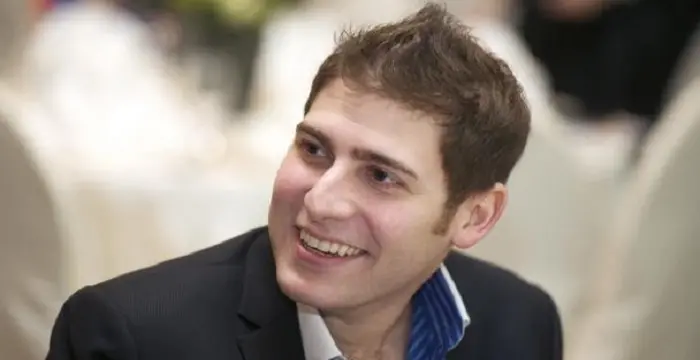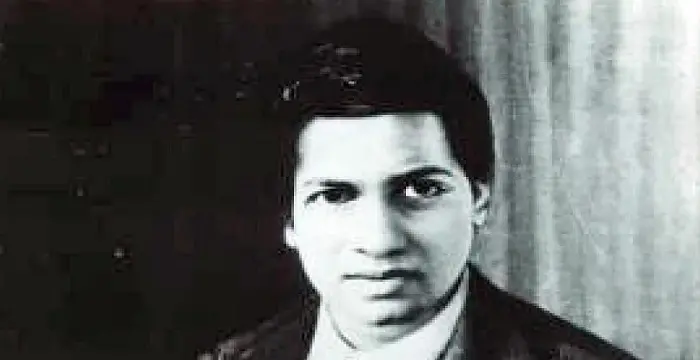
Srinivasa Ramanujan - Trinity College, Cambridge, Timeline and Personal Life
Srinivasa Ramanujan's Personal Details
Srinivasa Ramanujan was an Indian mathematician who made significant contributions to mathematical analysis, number theory, and continued fractions
| Information | Detail |
|---|---|
| Birthday | December 22, 1887 |
| Died on | April 26, 1920 |
| Nationality | Indian |
| Famous | Poorly Educated, Trinity College, Cambridge, Scientists, Mathematicians |
| Spouses | Janaki Ammal |
| Siblings | Sadagopan |
| Universities |
|
| Notable Alumnis |
|
| Birth Place | Erode |
| Gender | Male |
| Father | K. Srinivasa Iyengar |
| Mother | Komalat Ammal |
| Sun Sign | Sagittarius |
| Born in | Erode |
| Famous as | Mathematician |
| Died at Age | 32 |
// Famous Poorly Educated
Simon Cowell
Simon Cowell is a television personality, producer and entrepreneur. This biography of Simon Cowell provides detailed information about his childhood, life, achievements, works & timeline.
Richard Branson
Richard Branson is the founder and chairman of Virgin Group of companies. Explore this biography to learn more about his childhood, life, works, achievements and timeline.
Coco Chanel
Coco Chanel was a renowned French fashion designer who founded the fashion brand ‘Chanel’. Read this biography to learn more about her childhood, profile, life and timeline.
Srinivasa Ramanujan's photo
Who is Srinivasa Ramanujan?
Srinivasa Ramanujan was an Indian mathematician who made significant contributions to mathematical analysis, number theory, and continued fractions. What made his achievements really extraordinary was the fact that he received almost no formal training in pure mathematics and started working on his own mathematical research in isolation. Born into a humble family in southern India, he began displaying signs of his brilliance at a young age. He excelled in mathematics as a school student, and mastered a book on advanced trigonometry written by S. L. Loney by the time he was 13. While in his mid-teens, he was introduced to the book ‘A Synopsis of Elementary Results in Pure and Applied Mathematics’ which played an instrumental role in awakening his mathematical genius. By the time he was in his late-teens, he had already investigated the Bernoulli numbers and had calculated the Euler–Mascheroni constant up to 15 decimal places. He was, however, so consumed by mathematics that he was unable to focus on any other subject in college and thus could not complete his degree. After years of struggling, he was able to publish his first paper in the ‘Journal of the Indian Mathematical Society’ which helped him gain recognition. He moved to England and began working with the renowned mathematician G. H. Hardy. Their partnership, though productive, was short-lived as Ramanujan died of an illness at the age of just 32.
// Famous Mathematicians
Grigori Perelman
Grigori Perelman is a Russian mathematician who is best known for his contributions to Riemannian geometry and geometric topology. Check out this biography to know about his childhood, family life, achievements and fun facts about him.
Terence Tao
Terence Tao is an Australian- American mathematician who has contributed enormously to the field of mathematics. Check out this biography to know about his childhood, family life and achievements.
Isaac Newton
Isaac Newton was an English scientist and mathematician, who discovered gravitation and Newtonian Mechanics. Read this biography to find more on his life.
Childhood & Early Life
Srinivasa Ramanujan was born on 22 December 1887 in Erode, Madras Presidency, to K. Srinivasa Iyengar and his wife Komalatammal. His family was a humble one and his father worked as a clerk in a sari shop. His mother gave birth to several children after Ramanujan, but none of them survived infancy.
Ramanujan contracted smallpox in 1889 but recovered from the potentially fatal disease. While a young child, he spent considerable time in his maternal grandparents’ home.
He started his schooling in 1892. Initially he did not like school though he soon started excelling in his studies, especially mathematics.
After passing out of Kangayan Primary School, he enrolled at Town Higher Secondary School in 1897. He soon discovered a book on advanced trigonometry written by S. L. Loney which he mastered by the time he was 13. He proved to be brilliant student and won several merit certificates and academic awards.
In 1903, he got his hands on a book called ‘A Synopsis of Elementary Results in Pure and Applied Mathematics’ by G.S. Carr which was a collection of 5000 theorems. He was thoroughly fascinated by the book and spent months studying it in detail. This book is credited to have awakened the mathematical genius in him.
By the time he was 17, he had independently developed and investigated the Bernoulli numbers and had calculated the Euler–Mascheroni constant up to 15 decimal places. He was now no longer interested in any other subject, and totally immersed himself in the study of mathematics only.
He graduated from Town Higher Secondary School in 1904 and was awarded the K. Ranganatha Rao prize for mathematics by the school's headmaster, Krishnaswami Iyer.
He went to the Government Arts College, Kumbakonam, on scholarship. However, he was so preoccupied with mathematics that he could not focus on any other subject, and failed in most of them. Due to this, his scholarship was revoked.
He later enrolled at Pachaiyappa's College in Madras where again he excelled in mathematics, but performed poorly in other subjects. He failed to clear his Fellow of Arts exam in December 1906 and again a year later. Then he left college without a degree and continued to pursue independent research in mathematics.
Later Years
After dropping out of college, he struggled to make a living and lived in poverty for a while. He also suffered from poor health and had to undergo a surgery in 1910. After recuperating, he continued his search for a job.
He tutored some college students while desperately searching for a clerical position in Madras. Finally he had a meeting with deputy collector V. Ramaswamy Aiyer, who had recently founded the Indian Mathematical Society. Impressed by the young man’s works, Aiyer sent him with letters of introduction to R. Ramachandra Rao, the district collector for Nellore and the secretary of the Indian Mathematical Society.
Rao, though initially skeptical of the young man’s abilities soon changed his mind after Ramanujan discussed elliptic integrals, hypergeometric series, and his theory of divergent series with him. Rao agreed to help him get a job and also promised to financially fund his research.
Ramanujan got a clerical post with the Madras Port Trust, and continued his research with the financial help from Rao. His first paper, a 17-page work on Bernoulli numbers, was published with the help of Ramaswamy Aiyer, in the ‘Journal of the Indian Mathematical Society’ in 1911.
The publication of his paper helped him gain attention for his works, and soon he was popular among the mathematical fraternity in India. Wishing to further explore research in mathematics, Ramanujan began a correspondence with the acclaimed English mathematician, Godfrey H. Hardy, in 1913.
Hardy was very impressed with Ramanujan’s works and helped him get a special scholarship from the University of Madras and a grant from Trinity College, Cambridge. Thus Ramanujan travelled to England in 1914 and worked alongside Hardy who mentored and collaborated with the young Indian.
In spite of having almost no formal training in mathematics, Ramanujan’s knowledge of mathematics was astonishing. Even though he had no knowledge of the modern developments in the subject, he effortlessly worked out the Riemann series, the elliptic integrals, hypergeometric series, and the functional equations of the zeta function.
However, his lack of formal training also meant that he had no knowledge of doubly periodic functions, the classical theory of quadratic forms, or Cauchy’s theorem. Also, several of his theorems on the theory of prime numbers were wrong.
In England, he finally got the opportunity to interact with other gifted mathematicians like his mentor, Hardy, and made several further advances, especially in the partition of numbers. His papers were published in European journals, and he was awarded a Bachelor of Science degree by research in March 1916 for his work on highly composite numbers. His brilliant career was however cut short by his untimely death.
Major Works
Considered to be a mathematical genius, Srinivasa Ramanujan, was regarded at par with the likes of Leonhard Euler and Carl Jacobi. Along with Hardy, he studied the partition function P(n) extensively and gave a non-convergent asymptotic series that permits exact computation of the number of partitions of an integer. Their work led to the development of a new method for finding asymptotic formulae, called the circle method.
Awards & Achievements
He was elected a Fellow of the Royal Society in 1918, as one of the youngest Fellows in the history of the Royal Society. He was elected "for his investigation in Elliptic functions and the Theory of Numbers."
The same year, he was also elected a Fellow of Trinity College—the first Indian to be so honored.
Personal Life & Legacy
He was married to a ten-year-old girl named Janakiammal in July 1909 when he was in his early 20s. The marriage was arranged by his mother. The couple did not have any children, and it is possible that the marriage was never consummated.
Ramanujan suffered from various health problems throughout his life. His health declined considerably while he was living in England as the climatic conditions did not suit him. Also, he was a vegetarian who found it extremely difficult to obtain nutritious vegetarian food in England.
He was diagnosed with tuberculosis and a severe vitamin deficiency during the late 1910s and returned home to Madras in 1919. He never fully recovered and breathed his last on 26 April 1920, aged just 32.
His birthday, 22 December, is celebrated as 'State IT Day' in his home state of Tamil Nadu. On the 125th anniversary of his birth, India declared his birthday as 'National Mathematics Day.'
Top 10 Facts You Did Not Know About Ramanujan
Ramanujan was a lonely child in school as his peers could never understand him.
He hailed from a poor family and used a slate instead of paper to jot down the results of his derivations.
He did not receive any formal training in pure mathematics!
He lost his scholarship to study at Government Arts College as he was so obsessed with mathematics that he failed to clear other subjects.
Ramanujan did not possess a college degree.
He wrote to several prominent mathematicians, but most of them did not even respond as they dismissed him as a crank due to the lack of sophistication in his works.
He became a victim of racism in England.
The number 1729 is called Hardy-Ramanujan number in his honor following an incident regarding a taxi with this number.
A biographical film in Tamil based on Ramanujan’s life was released in 2014.
Google honored him on his 125th birth anniversary by replacing its logo with a doodle on its home page.
// Famous Trinity College, Cambridge
Isaac Newton
Isaac Newton was an English scientist and mathematician, who discovered gravitation and Newtonian Mechanics. Read this biography to find more on his life.
Aleister Crowley
Aleister Crowley was an occultist and ceremonial magician who founded the ethical philosophy of Thelema. This biography of Aleister Crowley provides detailed information about his childhood, life, achievements, works & timeline.
William Makepeace Thackeray
William Thackeray was an English novelist and satirist. Read this brief biography to find more on his life & timeline.
Srinivasa Ramanujan biography timelines
- // 22nd Dec 1887Srinivasa Ramanujan was born on 22 December 1887 in Erode, Madras Presidency, to K. Srinivasa Iyengar and his wife Komalatammal. His family was a humble one and his father worked as a clerk in a sari shop. His mother gave birth to several children after Ramanujan, but none of them survived infancy.
- // 1889Ramanujan contracted smallpox in 1889 but recovered from the potentially fatal disease. While a young child, he spent considerable time in his maternal grandparents’ home.
- // 1892He started his schooling in 1892. Initially he did not like school though he soon started excelling in his studies, especially mathematics.
- // 1897After passing out of Kangayan Primary School, he enrolled at Town Higher Secondary School in 1897. He soon discovered a book on advanced trigonometry written by S. L. Loney which he mastered by the time he was 13. He proved to be brilliant student and won several merit certificates and academic awards.
- // 1903In 1903, he got his hands on a book called ‘A Synopsis of Elementary Results in Pure and Applied Mathematics’ by G.S. Carr which was a collection of 5000 theorems. He was thoroughly fascinated by the book and spent months studying it in detail. This book is credited to have awakened the mathematical genius in him.
- // 1904He graduated from Town Higher Secondary School in 1904 and was awarded the K. Ranganatha Rao prize for mathematics by the school's headmaster, Krishnaswami Iyer.
- // 1906He later enrolled at Pachaiyappa's College in Madras where again he excelled in mathematics, but performed poorly in other subjects. He failed to clear his Fellow of Arts exam in December 1906 and again a year later. Then he left college without a degree and continued to pursue independent research in mathematics.
- // Jul 1909He was married to a ten-year-old girl named Janakiammal in July 1909 when he was in his early 20s. The marriage was arranged by his mother. The couple did not have any children, and it is possible that the marriage was never consummated.
- // 1910After dropping out of college, he struggled to make a living and lived in poverty for a while. He also suffered from poor health and had to undergo a surgery in 1910. After recuperating, he continued his search for a job.
- // 1911Ramanujan got a clerical post with the Madras Port Trust, and continued his research with the financial help from Rao. His first paper, a 17-page work on Bernoulli numbers, was published with the help of Ramaswamy Aiyer, in the ‘Journal of the Indian Mathematical Society’ in 1911.
- // 1913The publication of his paper helped him gain attention for his works, and soon he was popular among the mathematical fraternity in India. Wishing to further explore research in mathematics, Ramanujan began a correspondence with the acclaimed English mathematician, Godfrey H. Hardy, in 1913.
- // 1914Hardy was very impressed with Ramanujan’s works and helped him get a special scholarship from the University of Madras and a grant from Trinity College, Cambridge. Thus Ramanujan travelled to England in 1914 and worked alongside Hardy who mentored and collaborated with the young Indian.
- // Mar 1916In England, he finally got the opportunity to interact with other gifted mathematicians like his mentor, Hardy, and made several further advances, especially in the partition of numbers. His papers were published in European journals, and he was awarded a Bachelor of Science degree by research in March 1916 for his work on highly composite numbers. His brilliant career was however cut short by his untimely death.
- // 1918He was elected a Fellow of the Royal Society in 1918, as one of the youngest Fellows in the history of the Royal Society. He was elected "for his investigation in Elliptic functions and the Theory of Numbers."
- // 26th Apr 1920He was diagnosed with tuberculosis and a severe vitamin deficiency during the late 1910s and returned home to Madras in 1919. He never fully recovered and breathed his last on 26 April 1920, aged just 32.
// Famous Scientists
Juliane Koepcke
Juliane Koepcke is a German-Peruvian biologist, who was the lone survivor among the 92 passengers and crew of the ill-fated LANSA Flight 508 that crashed in the Peruvian rainforest on 24 December 1971. Know more about her life in this biography.
Henry Cavendish
Henry Cavendish was a theoretical chemist and physicist, renowned for discovery of hydrogen and calculation of the mass of earth. To know more about his childhood, profile, timeline and career read on
Konstantin Tsiolkovsky
Konstantin Tsiolkovsky was a Russian rocket scientist and a pioneer of astronautics. This biography provides detailed information about his childhood, family, personal life, career, achievements, etc.
Gabe Newell
Gabe Newell is an American computer programmer and businessman, best known as the co-founder of ‘Valve Corporation.’ This biography provides detailed information about his childhood, family, personal life, career, etc.
Grigori Perelman
Grigori Perelman is a Russian mathematician who is best known for his contributions to Riemannian geometry and geometric topology. Check out this biography to know about his childhood, family life, achievements and fun facts about him.
Eduardo Saverin
Eduardo Luiz Saverin is a Brazilian internet entrepreneur and investor. This biography profiles his childhood, life, career, achievements, and timeline
Srinivasa Ramanujan's FAQ
What is Srinivasa Ramanujan birthday?
Srinivasa Ramanujan was born at 1887-12-22
When was Srinivasa Ramanujan died?
Srinivasa Ramanujan was died at 1920-04-26
Where was Srinivasa Ramanujan died?
Srinivasa Ramanujan was died in Chetput
Which age was Srinivasa Ramanujan died?
Srinivasa Ramanujan was died at age 32
Where is Srinivasa Ramanujan's birth place?
Srinivasa Ramanujan was born in Erode
What is Srinivasa Ramanujan nationalities?
Srinivasa Ramanujan's nationalities is Indian
Who is Srinivasa Ramanujan spouses?
Srinivasa Ramanujan's spouses is Janaki Ammal
Who is Srinivasa Ramanujan siblings?
Srinivasa Ramanujan's siblings is Sadagopan
What was Srinivasa Ramanujan universities?
Srinivasa Ramanujan studied at Trinity College, Cambridge, Town Higher Secondary School, 1906 - Government Arts College, Kumbakonam, Pachaiyappa's College, 1920 - Trinity College, Cambridge, 1919 - University of Cambridge, 1916 - University of Cambridge, University of Madras
What was Srinivasa Ramanujan notable alumnis?
Srinivasa Ramanujan's notable alumnis is Trinity College, Cambridge
Who is Srinivasa Ramanujan's father?
Srinivasa Ramanujan's father is K. Srinivasa Iyengar
Who is Srinivasa Ramanujan's mother?
Srinivasa Ramanujan's mother is Komalat Ammal
What is Srinivasa Ramanujan's sun sign?
Srinivasa Ramanujan is Sagittarius
How famous is Srinivasa Ramanujan?
Srinivasa Ramanujan is famouse as Mathematician

